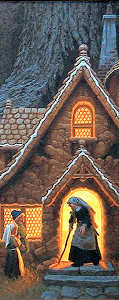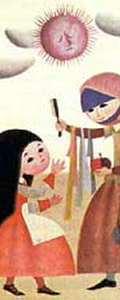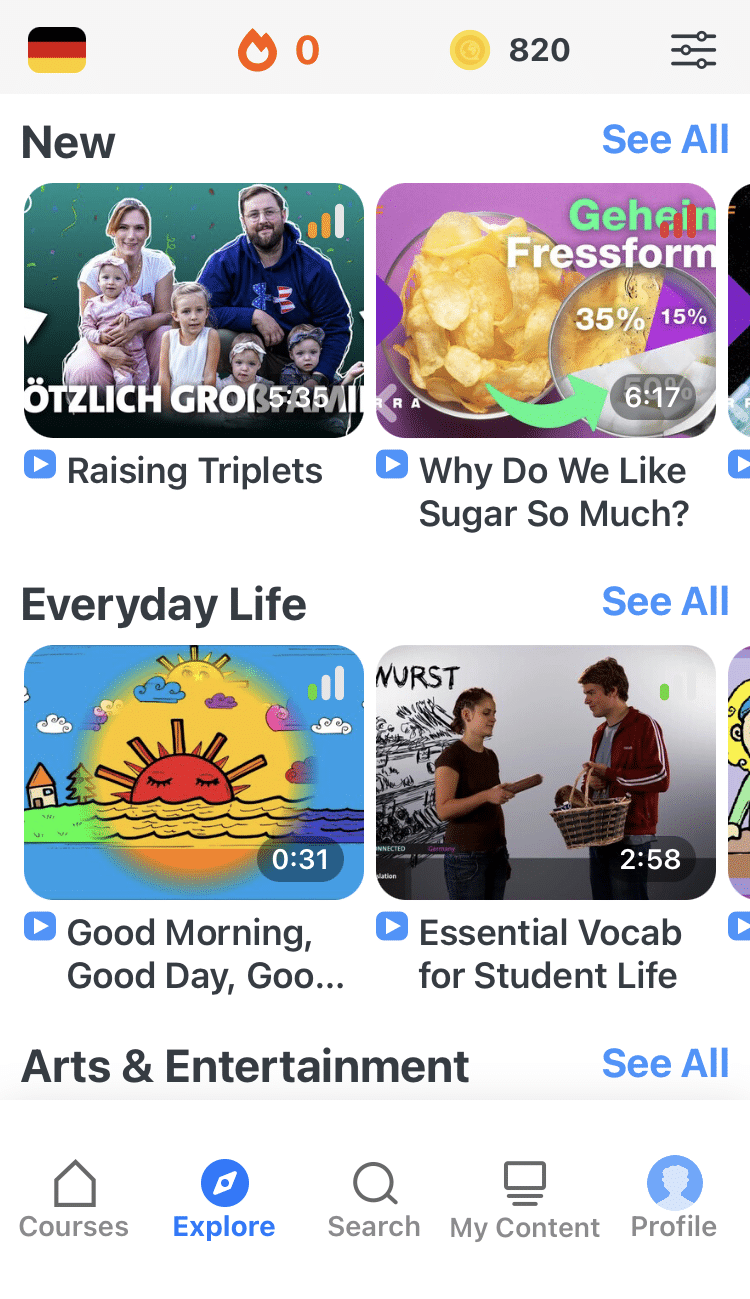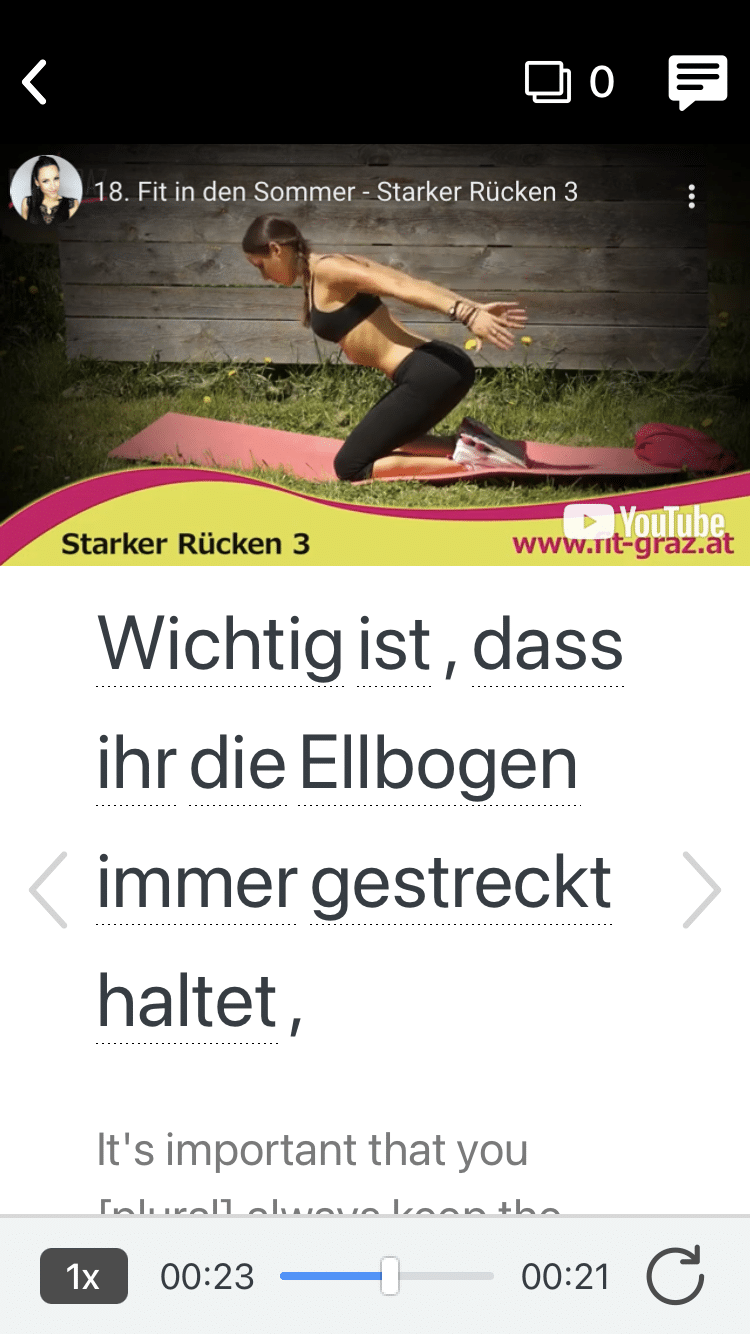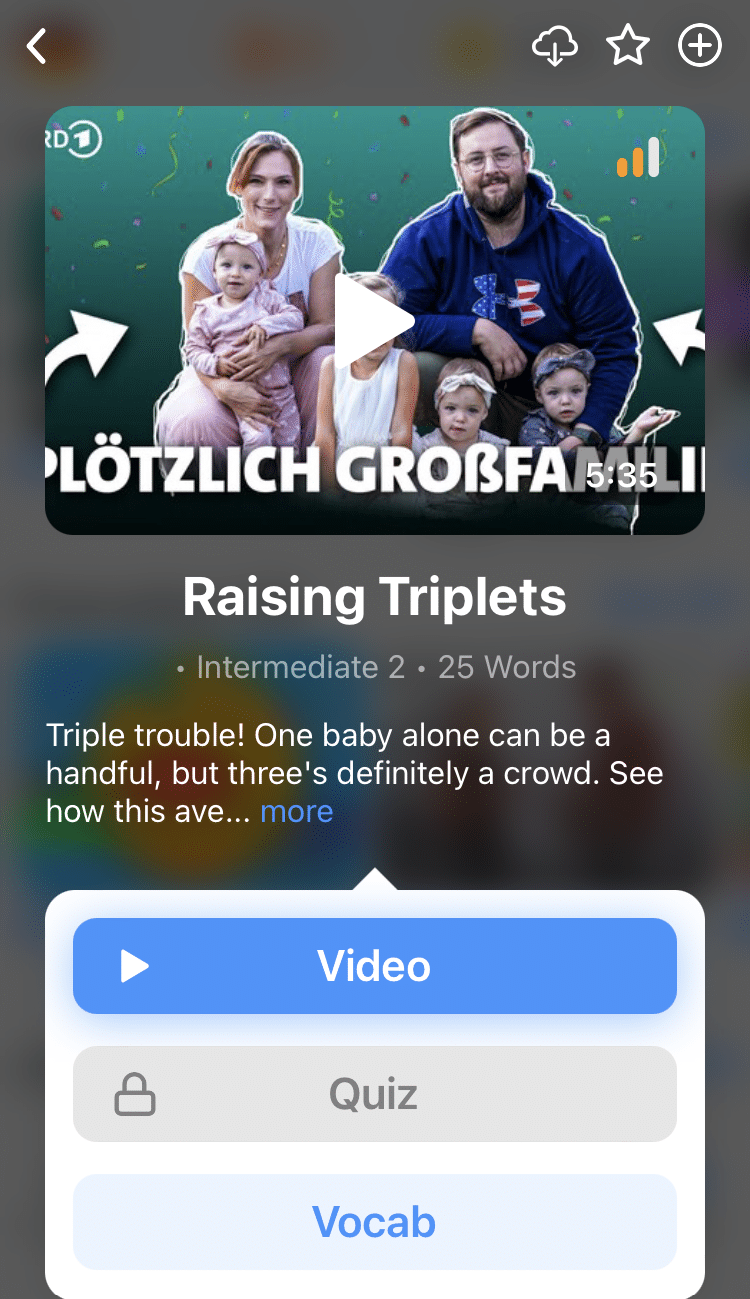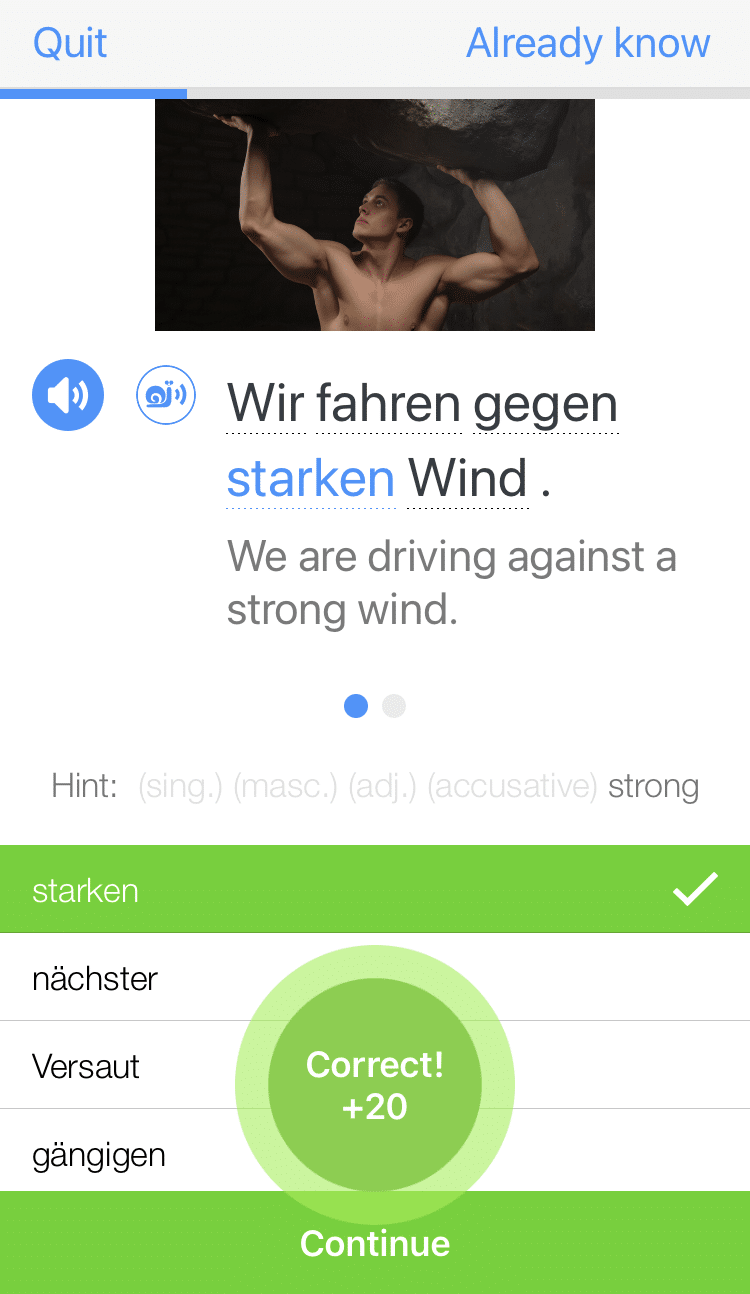
Accusative German Exercises
Today’s quest, should you choose to accept it, is to tackle the accusative case.
But to do this, you’ll have to practice a lot, but don’t worry—I’ve got you.
Dive into this post to find many accusative German exercises for you to practice with the German accusative case. Sure you could practice with any number of resources, but in this post, I’ve chosen fairy tales to make it more fun.
Contents
- The German Accusative Case in a Nutshell
- Identifying the German Accusative Case
- Online German Accusative Case Exercises
- Using Fairy Tales to Learn the Accusative Case
- Beyond the Book: Accusative German Exercises with Friends
- And One More Thing...
Download: This blog post is available as a convenient and portable PDF that you can take anywhere. Click here to get a copy. (Download)
The German Accusative Case in a Nutshell
Nouns in German have various cases, depending on their relationship to the action of the sentence.
There are four basic noun cases:
Nominative: The noun is performing the action.
Dative: The noun is being indirectly affected by the action.
Genitive: The noun possesses something/one.
Accusative: The noun is receiving the action.
For an example of all four, just look at this sentence:
“I give my grandmother my father’s cookie.”
“I” is performing the action, “my grandmother” (the indirect object of the sentence) is being affected by the action, “my father’s” denotes ownership and “a cookie” (the direct object) is receiving the action. Therefore, we can break the sentence down like this:
Nominative: “I”
Dative: “my grandmother”
Genitive: “my father’s”
Accusative: “a cookie”
For the purpose of this post, we will only be talking about the accusative case!
Identifying the German Accusative Case
Accusative Prepositions
How can you tell which noun (or pronoun) is using the accusative case? Just look at the prepositions it uses!
There are certain prepositions which hint that the noun they apply to is in the accusative case. Look for these words:
- durch (through)
- für (for)
- gegen (against)
- ohne (without)
- um (at/about)
- bis (until)
You can remember these prepositions by thinking of the way they interact with an object.
For instance, think of a straw.
The straw is for (für) drinking liquid through (durch). Without (ohne) a straw, you cannot drink, and until (bis) you put a straw into a liquid, you cannot drink it. At (um) the beginning you have got a lot of liquid to drink, but when the straw hits against (gegen) the bottom of the cup, you know there is nothing left.
It might seem a bit simplistic, but visualizing prepositions in this way might help you memorize them easier.
The following prepositions (called two-way prepositions) can either be accusative or dative, so keep an eye out for them, as well:
- an (on/at)
- hinter (behind)
- in (in)
- über (above)
- neben (next to/beside)
- unter (under/beneath)
- vor (in front of/before)
- zwischen (between)
As you can see, these prepositions revolve around location.
If the preposition is describing movement, then it is accusative. If it is not, then it is dative.
For instance: A car driving behind me would be showing movement, and thus be accusative, while a car parked behind me is not in motion, and so it would be dative.
Definite and Indefinite Accusative Articles
Another way to spot the accusative case is by looking at the articles and adjective endings surrounding it.
In the accusative tense, der articles change from these:
der, die, das, die
To these:
den, die, das, die
Similarly, ein articles change from these:
ein, eine, ein
To these:
einen, eine, ein
(There is no plural indefinite article. It is grammatically incorrect to say a when speaking of multiple objects, as a implies a singular object.)
As you might have noticed, feminine, neuter and plural forms remain the same, while the masculine forms take an -n or -en.
Accusative Adjective Endings
Adjective endings follow nearly the same pattern as both definite and indefinite articles:
- Masculine endings change to -n (if the word ends in an e) or -en (if it does not).
- Adjectives describing feminine nouns end in -e, and those describing neuter nouns end in -s or -es.
Online German Accusative Case Exercises
Now that you have a basic idea of what the accusative tense is and how to spot it in context, it’s time to practice!
For best results, we recommend studying this tense with FluentU, in addition to the other exercises below.
FluentU takes authentic videos—like music videos, movie trailers, news and inspiring talks—and turns them into personalized language learning lessons.
You can try FluentU for free for 2 weeks. Check out the website or download the iOS app or Android app.
P.S. Click here to take advantage of our current sale! (Expires at the end of this month.)
Here are some additional online resources where you can get plenty of practice with the accusative case:
- German.net has some excellent noun case practice sheets, which will help you figure out which article to use for the accusative (and the other cases, while you are at it!).
- Lingolia’s accusative case exercises will let you practice your pronouns (it even has a useful way to add special characters as you are writing!).
We also recommend starting out by reading German stories you already know in English. Since you are already familiar with the plot, you can focus on training your brain to understand the German.
Let’s use some of our favorite childhood stories to study the accusative case! Below, you will find some exercises based on excerpts from Brother Grimm fairy tales. Let’s begin the story!
Using Fairy Tales to Learn the Accusative Case
Spotting the Accusative with Hansel and Gretel (Hänsel und Gretel)
„Gretel nahm das Brot unter die Schürze, weil Hänsel die Steine in der Tasche hatte. Danach machten sie sich alle zusammen auf den Weg in den Wald.“
“Gretel took the bread under her apron because Hansel had the stones in his pocket. After that, they set off on their way into the forest.”
First, let’s practice finding the accusative!
In the passage above, find the nouns that are in the accusative tense.
Remember to look at the prepositions and adjectives around the nouns and to look for the nouns that are being acted on.
Done?
Great!
Here are the accusative nouns:
das Brot (the bread)
die Steine (the stones)
den Weg (their way)
Did you manage to find them all?
Try it yourself:
Find a German-language story or any other text. Circle all the accusative nouns.
For an extra challenge, try to identify all the other noun cases, as well!
Filling In the Blanks with Little Red Riding Hood (Rotkäppchen)
„_____ Jäger zog _____ Wolf den Pelz ab und ging damit heim, _____ Großmutter aß _____ Kuchen und trank _____ Wein, _____ Rotkäppchen mitgebracht hatte, und erholte sich wieder.“
“The hunter removed the wolf’s pelt and went home, the grandmother ate the cake and drank the wine that Little Red Riding Hood had brought, and got better again.”
Notice something missing in the excerpt above?
All the articles have been stolen by that big, bad wolf!
Can you place the correct accusative articles back into their proper places?
Take a moment now to give it a try, then scroll down for the answer!
Ready? Here is the original text, with the articles back in their rightful places:
„Der Jäger zog dem Wolf den Pelz ab und ging damit heim, die Großmutter aß den Kuchen und trank den Wein, den Rotkäppchen mitgebracht hatte, und erholte sich wieder.“
Try it yourself:
Find a new story or German text. Circle every article you can find, then put a check-mark next to the accusative articles.
Challenge yourself to translate a few lines from an English story, keeping the articles and tenses in mind.
Snow White (Schneewittchen)
„_____ lusterte den _____, und als es sah, daß die _____ davon aß, so konnte es nicht länger widerstehen, streckte die _____ hinaus und nahm die _____.“
“_____ stared at the _____ and when she saw that the _____ ate all of it, she couldn’t take it any longer, stretching out her _____ and taking the _____.”
That pesky wolf is back, and this time he has eaten all the nouns (and their attached adjectives)!
We have made him spit them out, but they are all jumbled now:
- Schneewittchen
- Hand
- Bäuerin
- giftige Hälfte
- schönen Apfel an
Can you place the nouns back in their correct spots?
Once you do this, use context clues to figure out which nouns are in the accusative tense!
Ready?
Here is the original text with the nouns replaced (we have highlighted the accusative nouns in bold lettering).
„Schneewittchen lusterte den schönen Apfel an, und als es sah, daß die Bäuerin davon aß, so konnte es nicht länger widerstehen, streckte die Hand hinaus und nahm die giftige Hälfte.“
“Snow White stared at the beautiful apple and when she saw that the farm girl ate of it, she could not take it any longer, stretching out her hand and taking the poisoned half.”
Try it yourself:
Put away those short stories: It is time to write your own.
Dig down into your memory and pull up a fairy tale. Write down the first few lines, in German. Then go back and circle all the accusative nouns you used, making sure the articles and adjectives they appear with are conjugated correctly.
Beyond the Book: Accusative German Exercises with Friends
Now put away that book and get some speaking practice in… with friends!
If you are trying to learn a language, including others in the process will help motivate you. Try out the exercises below to see if you have mastered the accusative case.
Describe the World Around You
This exercise will help you practice and build your vocabulary as well.
Whether you are eating lunch or hanging out at the park, see if you can talk about the people and landscape around you.
You might say: “Ich sehe eine Frau. Sie wirft ihrem Kind einen Ball zu” to describe a woman throwing a ball to her child. Or what about the boy wearing a blue hoodie, or, “Ein Junge trägt einen blauen Pulli”?
Name That Celebrity
Can you guess what famous person is being described in the following example?
Ich trage einen Bart und ich habe The Adventures of Huckleberry Finn geschrieben. Wer bin ich?” (I wear a beard and I wrote “The Adventures of Huckleberry Finn.” Who am I?).
Did you guess Mark Twain?
Play the game with friends to practice the accusative case!
Congratulations! You have survived the ordeal and made it to the end of this practice session.
This means you have mastered the accusative case thanks to all the exercises in this post! And you will, of course, live happily ever after.
Download: This blog post is available as a convenient and portable PDF that you can take anywhere. Click here to get a copy. (Download)
And One More Thing...
Want to know the key to learning German effectively?
It's using the right content and tools, like FluentU has to offer! Browse hundreds of videos, take endless quizzes and master the German language faster than you've ever imagine!
Watching a fun video, but having trouble understanding it? FluentU brings native videos within reach with interactive subtitles.
You can tap on any word to look it up instantly. Every definition has examples that have been written to help you understand how the word is used. If you see an interesting word you don't know, you can add it to a vocabulary list.
And FluentU isn't just for watching videos. It's a complete platform for learning. It's designed to effectively teach you all the vocabulary from any video. Swipe left or right to see more examples of the word you're on.
The best part is that FluentU keeps track of the vocabulary that you're learning, and gives you extra practice with difficult words. It'll even remind you when it’s time to review what you’ve learned.
Start using the FluentU website on your computer or tablet or, better yet, download the FluentU app from the iTunes or Google Play store. Click here to take advantage of our current sale! (Expires at the end of this month.)

